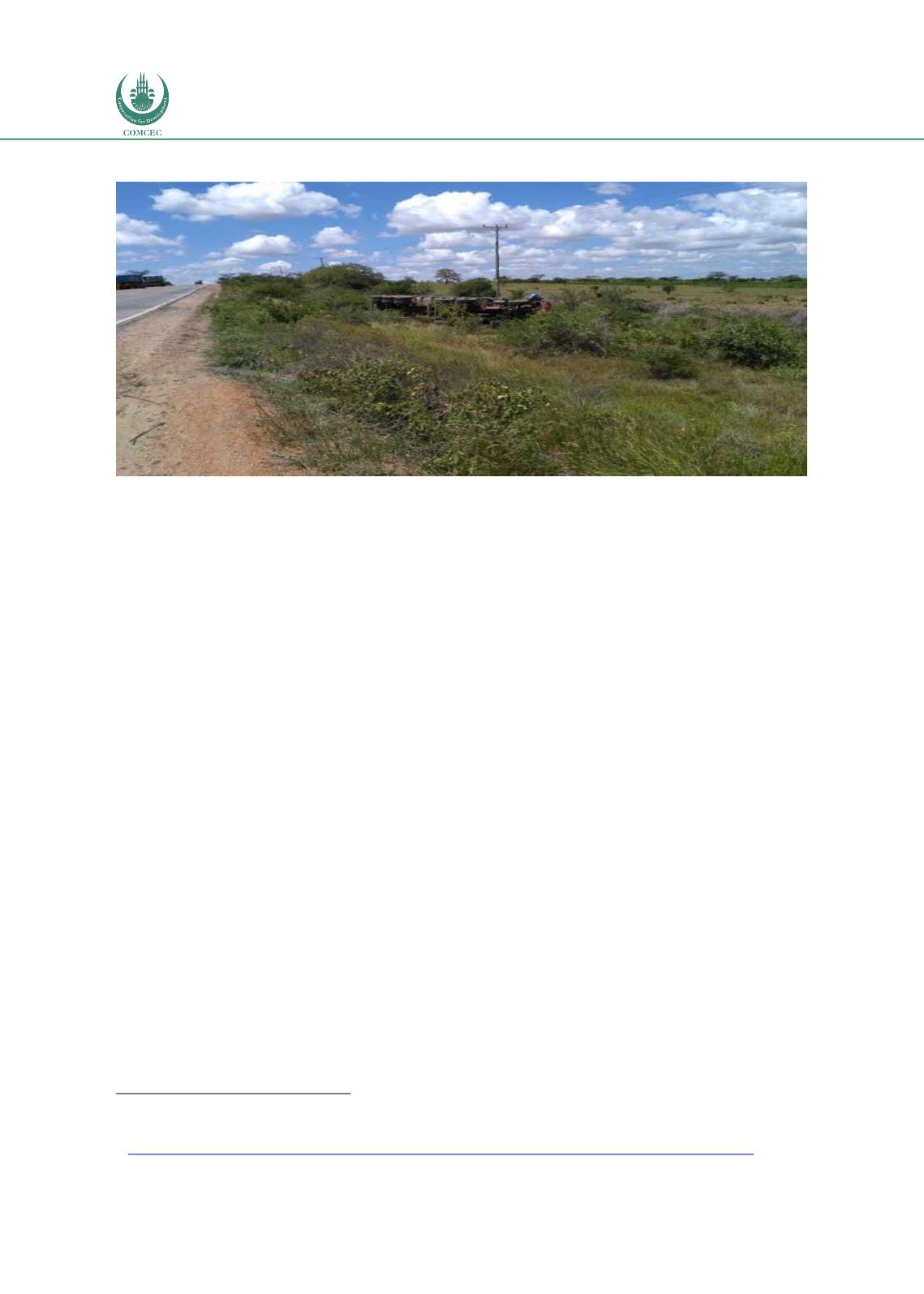

Improving Transnational Transport Corridors
In the OIC Member Countries: Concepts and Cases
140
Figure 48: Overturned truck Mombasa-Nairobi highway Northern Transport Corridor Kenya
Source: Beatrice Obwocha, Nation Media Group.
The overturned truck shown in the photograph was taken on the Mombasa Highway. The accident
was due to driver fatigue.
Transport corridors undoubtedly pose a
public health
hazard through the spread of
communicable diseases. The NTTC is characterized by high HIV prevalence levels; there is
heavy and frequent movement of people across the Corridor, and there are challenges in the
health systems to meet the demand for HIV and AIDS services. Key drivers of HIV and AIDS
pandemic along the Corridor include structural, bio medical and structural reasons. Gaps and
challenges identified include poor access to health services, low level of HIV prevention
awareness, tight working schedules, stigma and discrimination, alcohol and drug abuse,
ignorance of individual HIV status, poverty, presence of commercial sex workers, irregular
condom supply and inadequate funding. There are several lessons learned from the health
interventions along the Corridor that can be replicated elsewhere if needed, but these are not
repeated here but can be read on the link given
68
.
Phytosanitary controls
are applied to the movement of plants, food stuffs and livestock
across borders, standards for which are not harmonized along the NTTC is a significant cause
of avoidable delays. Such constraints are commonly grouped under the heading of non-tariff-
barriers (NTBs). The UN Economic Commission for Africa, European Union and World Bank all
support the deepening integration of the region and the gradual elimination of NTBs, part of
which is the harmonization of sanitary and phytosanitary regulation and controls. These
agencies make the point that Kenya, Uganda and others may be over-regulating their trade.
Their research showed that frequency and coverage ratios for five different categories of rules
and regulations were compared across a selection of SSA countries. The categories of rules and
regulations, were (i) sanitary and phytosanitary (SPS), (ii) technical barriers to trade (TBT),
6
8 http://www.roadsidestations.org/wp-content/uploads/2014/10/Safety-and-Health-Final-Report-Volume-1.pdf .















